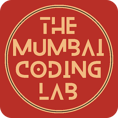Programming Languages for Robotics: Which One to Choose?
This blog explores the strengths and weaknesses of three popular programming languages for robotics: Python, C++, and Scratch. By comparing their features and suitable applications, it helps students and educators choose the right language for their robotics projects.
Vinay
5/14/20247 min read
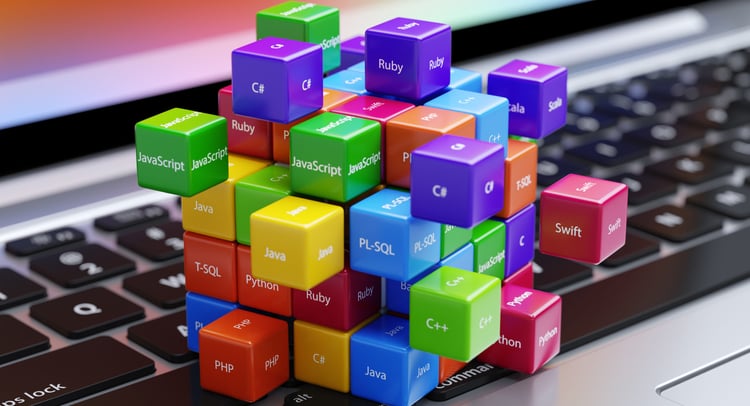

Introduction:
Choosing the right programming language for robotics can be a daunting task, especially with the variety of options available. Each language has its own strengths and weaknesses, making it suitable for different types of robotics projects. In this blog, we'll compare three popular programming languages used in robotics: Python, C++, and Scratch. We'll discuss their advantages, disadvantages, and suitable applications to help you make an informed decision.
Overview of Popular Programming Languages:
Language Comparisons and Use Cases:
Choosing the Right Language for Your Project:
Consider Your Audience:
Beginners and Young Students: Scratch is an excellent choice due to its simplicity and visual approach. It helps in grasping fundamental programming concepts without the complexity of syntax.
Intermediate to Advanced Students: Python strikes a balance between ease of use and powerful capabilities, making it ideal for more complex projects and learning advanced concepts.
Experienced Programmers: C++ is suited for those who require high performance and are comfortable with more complex syntax and system-level programming.
Evaluate Project Requirements:
Rapid Prototyping: Python’s simplicity and extensive libraries allow for quick development and testing of ideas.
Real-Time Performance: C++ is preferred for projects where speed and efficiency are critical.
Educational Purposes: Scratch is perfect for teaching and learning, especially for younger students or those new to programming.
Consider System Constraints:
Resource Availability: For systems with limited resources, C++ can be more efficient.
Development Speed: Python allows for faster development cycles due to its high-level nature and readability.
One of the Best Platform to Learn Programming Languages:
The Mumbai Coding Lab: designed for students of different age groups. Including Future Ready courses like ScratchJr & Scratch, Raspberry Pi,Python, Arduino, Artificial Intelligence and Machine Learning & much more....,These hands-on robotics kits introduce students to robotics and coding concepts in a fun and accessible way, promoting creativity and experimentation.
The most important thing parents should look for while searching for robotics and coding schools is physical accessible distance and flexibility of physical one-to-one and online/virtual classes. At TMCL we are happy to offer both Physical one-to-one and Online classes as they prefer. Our Lab is located in Velentine Apartment Building in Malad East near Oberoi Mall.
Website Link: https://themumbaicodinglab.in/
The most important factor while choosing any after-school program like robotics and coding is affordability, the TMCL programs are easily affordable to anyone.
Conclusion:
Choosing the right programming language for your robotics project depends on your experience level, project requirements, and the intended audience. Python, C++, and Scratch each have their unique strengths and are suited for different applications. By understanding their advantages and limitations, you can select the most appropriate language to achieve your robotics goals effectively.
Python:
Overview: Python is a high-level, interpreted language known for its simplicity and readability. It has a large standard library and numerous third-party libraries, making it a popular choice for beginners and professionals alike.
Use Cases: Ideal for scripting, data analysis, machine learning, and rapid prototyping in robotics.
C++:
Overview: C++ is a high-performance, compiled language that offers fine-grained control over system resources. It's widely used in applications that require real-time processing and high efficiency.
Use Cases: Suitable for real-time systems, embedded systems, and applications requiring high performance and low latency.
Scratch:
Overview: Scratch is a visual programming language designed for beginners, especially younger students. It uses a block-based interface to create programs, making it easy to learn and use.
Use Cases: Great for educational purposes, introducing programming concepts, and simple robotics projects.
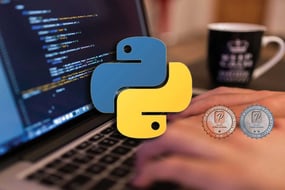

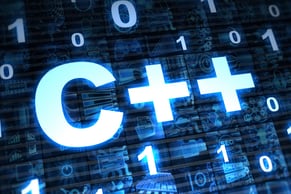

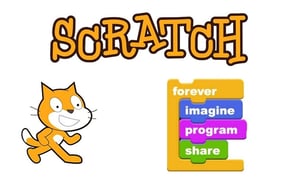

Python:
Advantages:
Easy to learn and use, with a simple syntax.
Extensive libraries for various applications (e.g., NumPy, OpenCV, TensorFlow).
Strong community support and numerous tutorials.
Disadvantages:
Slower execution speed compared to compiled languages like C++.
Higher memory usage, which can be a concern for resource-constrained systems.
Applications:
Prototyping robotic algorithms.
Data processing and machine learning.
Integrating with other systems using APIs.
C++:
Advantages:
High performance and efficient memory management.
Direct hardware manipulation capabilities.
Real-time processing and low latency.
Disadvantages:
Steeper learning curve due to complex syntax.
Longer development time compared to high-level languages.
Applications:
Real-time control systems and embedded systems.
Performance-critical applications like motor control and sensor fusion.
Robotics operating systems (e.g., ROS - Robot Operating System).
Scratch:
Advantages:
Extremely user-friendly with a visual, drag-and-drop interface.
Great for teaching basic programming concepts and logic.
Instant feedback through visual blocks.
Disadvantages:
Limited functionality for advanced robotics applications.
Not suitable for performance-critical or real-time systems.
Applications:
Educational robotics kits (e.g., LEGO Mindstorms, micro:bit).
Introductory programming courses for young students.
Simple robotic projects and demonstrations.
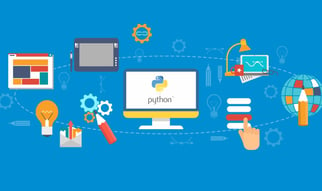


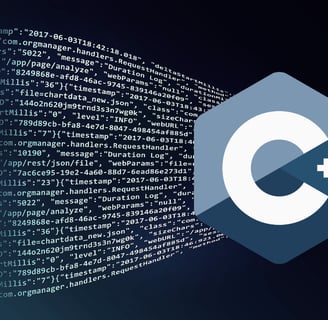

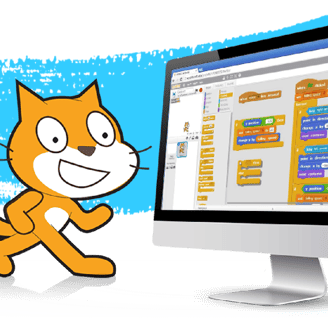
Introduction:
Choosing the right programming language for robotics can be a daunting task, especially with the variety of options available. Each language has its own strengths and weaknesses, making it suitable for different types of robotics projects. In this blog, we'll compare three popular programming languages used in robotics: Python, C++, and Scratch. We'll discuss their advantages, disadvantages, and suitable applications to help you make an informed decision.
Overview of Popular Programming Languages:
Language Comparisons and Use Cases:
Choosing the Right Language for Your Project:
Consider Your Audience:
Beginners and Young Students: Scratch is an excellent choice due to its simplicity and visual approach. It helps in grasping fundamental programming concepts without the complexity of syntax.
Intermediate to Advanced Students: Python strikes a balance between ease of use and powerful capabilities, making it ideal for more complex projects and learning advanced concepts.
Experienced Programmers: C++ is suited for those who require high performance and are comfortable with more complex syntax and system-level programming.
Evaluate Project Requirements:
Rapid Prototyping: Python’s simplicity and extensive libraries allow for quick development and testing of ideas.
Real-Time Performance: C++ is preferred for projects where speed and efficiency are critical.
Educational Purposes: Scratch is perfect for teaching and learning, especially for younger students or those new to programming.
Consider System Constraints:
Resource Availability: For systems with limited resources, C++ can be more efficient.
Development Speed: Python allows for faster development cycles due to its high-level nature and readability.
One of the Best Platform to Learn Programming Languages:
The Mumbai Coding Lab: designed for students of different age groups. Including Future Ready courses like ScratchJr & Scratch, Raspberry Pi,Python, Arduino, Artificial Intelligence and Machine Learning & much more....,These hands-on robotics kits introduce students to robotics and coding concepts in a fun and accessible way, promoting creativity and experimentation.
The most important thing parents should look for while searching for robotics and coding schools is physical accessible distance and flexibility of physical one-to-one and online/virtual classes. At TMCL we are happy to offer both Physical one-to-one and Online classes as they prefer. Our Lab is located in Velentine Apartment Building in Malad East near Oberoi Mall.
Website Link: https://themumbaicodinglab.in/
The most important factor while choosing any after-school program like robotics and coding is affordability, the TMCL programs are easily affordable to anyone.
Conclusion:
Choosing the right programming language for your robotics project depends on your experience level, project requirements, and the intended audience. Python, C++, and Scratch each have their unique strengths and are suited for different applications. By understanding their advantages and limitations, you can select the most appropriate language to achieve your robotics goals effectively.
Python:
Overview: Python is a high-level, interpreted language known for its simplicity and readability. It has a large standard library and numerous third-party libraries, making it a popular choice for beginners and professionals alike.
Use Cases: Ideal for scripting, data analysis, machine learning, and rapid prototyping in robotics.
2. C++:Overview: C++ is a high-performance, compiled language that offers fine-grained control over system resources. It's widely used in applications that require real-time processing and high efficiency.
Use Cases: Suitable for real-time systems, embedded systems, and applications requiring high performance and low latency.
3.Scratch:
Overview: Scratch is a visual programming language designed for beginners, especially younger students. It uses a block-based interface to create programs, making it easy to learn and use.
Use Cases: Great for educational purposes, introducing programming concepts, and simple robotics projects.






Python:
Advantages:
Easy to learn and use, with a simple syntax.
Extensive libraries for various applications (e.g., NumPy, OpenCV, TensorFlow).
Strong community support and numerous tutorials.
Disadvantages:
Slower execution speed compared to compiled languages like C++.
Higher memory usage, which can be a concern for resource-constrained systems.
Applications:
Prototyping robotic algorithms.
Data processing and machine learning.
Integrating with other systems using APIs.
C++:Advantages:
High performance and efficient memory management.
Direct hardware manipulation capabilities.
Real-time processing and low latency.
Disadvantages:
Steeper learning curve due to complex syntax.
Longer development time compared to high-level languages.
Applications:
Real-time control systems and embedded systems.
Performance-critical applications like motor control and sensor fusion.
Robotics operating systems (e.g., ROS - Robot Operating System).
Scratch:Advantages:
Extremely user-friendly with a visual, drag-and-drop interface.
Great for teaching basic programming concepts and logic.
Instant feedback through visual blocks.
Disadvantages:
Limited functionality for advanced robotics applications.
Not suitable for performance-critical or real-time systems.
Applications:
Educational robotics kits (e.g., LEGO Mindstorms, micro:bit).
Introductory programming courses for young students.
Simple robotic projects and demonstrations.








